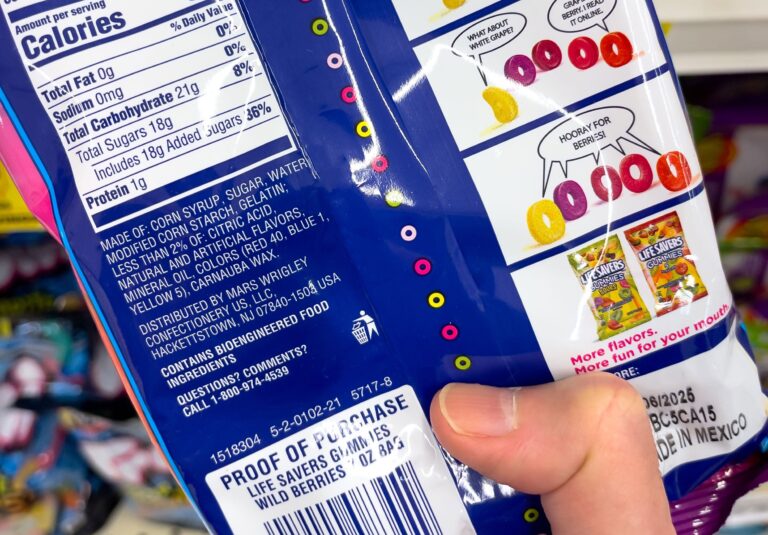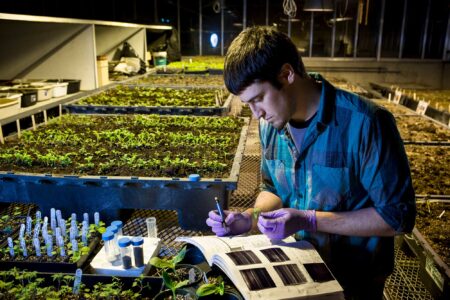Synthetic dyes, a byproduct of petroleum, give food the enticing colors that consumers have come to expect. Yet, their association with ultra-processed food (UPF) and allegations of links to hyperactivity in children have driven advocacy groups to call for them to be removed from our food.
The movement to ban dyes has recently transitioned from the state to the federal level, and businesses are scrambling to change their formulas ahead of the artificial-dye deadline.
There are nine synthetic food dyes on the market in the United States — one is approaching its deadline to be removed from the food supply, the federal government is seeking to ban two others, and the remaining six could end up being removed by the food industry itself as states begin banning them from school lunches.
“In order of abundance in our food is Red No. 40, Yellow No. 6, Yellow No. 5, Blue No. 1, Blue No. 2, and Green No. 3, Orange B, Red No. 2, and the one that’s been kicked out, Red No. 3,” according to Dr. Lorne Hofseth, a College of Pharmacy professor at the University of South Carolina. Hofseth focuses on inflammation, cancer and, more recently, lymphatic food dyes.
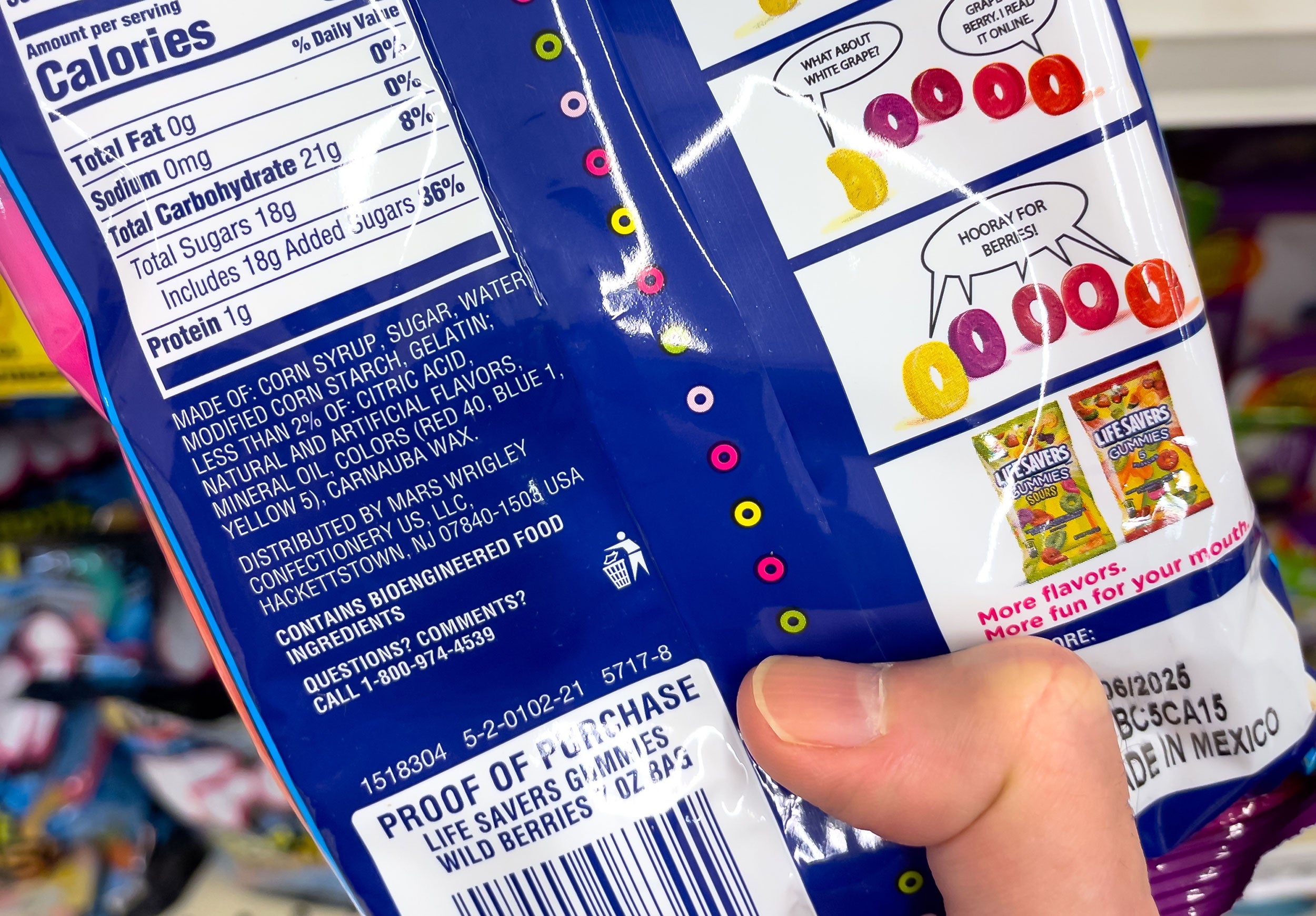
On January 15, 2025, the U.S. Food and Drug Administration revoked authorization of Red No. 3 in food, causing it to be phased out by the end of 2027. The agency pointed to a study that found, in high doses, Red No. 3 causes cancer in male rats. This invoked the Delaney Clause, prohibiting authorization by the FDA of a food or color additive if it has been found to induce cancer in humans or animals.
This happened despite the study noting that the mechanism that caused the cancer that is not present in humans and the levels of dosage were not relevant to the levels used in human food human consumption.
Then on April 22, 2025, the Trump administration’s Human Health Services secretary, Robert F. Kennedy Jr., continued this strategy under the Make America Healthy Again campaign and announced a six-step framework to remove the remaining synthetic dyes before the end of 2026 in collaboration with industry stakeholders.
This framework found here consists of:
- Establishing a formal timeline for the food industry;
- Initiating the process to revoke authorization of Red No. 2 and Orange B;
- Working with industry to eliminate the other six synthetic dyes;
- Authorizing four new natural color additives;
- Partnering with the National Institutes of Health for research on how food additives impact children’s health and development;
- Requesting food companies to remove Red No. 3 before the 2027 deadline.
Orange B and Red No. 2 are the least-used artificial colors, and it has been over five years since certification has been requested in food products for either. Red No. 2 is restricted to being used only for coloring the skins of oranges not intended for processing in products such as orange juice, after the dye was banned as a food additive in 1976 due to public concerns of potential carcinogenic effects in female rats. Orange B is allowed in the casing of sausages not exceeding 150 parts per million.
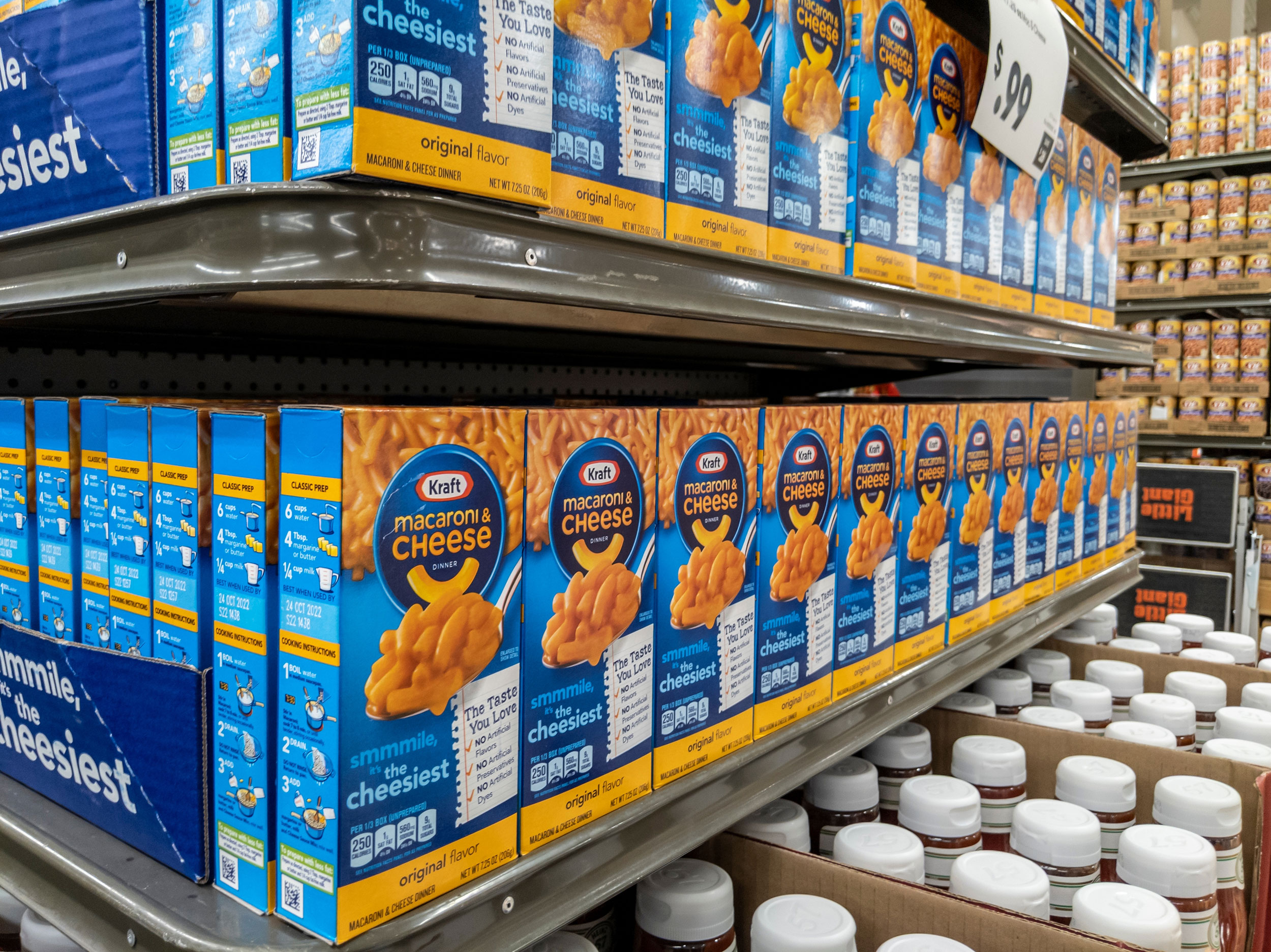

Companies representing the food industry — included PepsiCo, Kraft Heinz, General Mills, Tyson Foods, Kellogg, Smucker, and the Consumer Brands Association (CBA) — met with Kennedy soon after his confirmation, according to POLITICO. CBA represents large companies such as Coca-Cola, Hormel, and Keurig-Dr Pepper.
The activism in this space is specifically related to synthetic dyes as opposed to natural dyes. Synthetic dyes are derived from petroleum-based chemical compounds created in a lab– they are also known as “certified colors” because the FDA is required to certify every batch.
Although Kennedy affirmed after leaving the meeting there was not a push to revoke authorization of the six remaining dyes using a regulatory or legislative arm, he insisted it was an effort to collaborate with industry.
PepsiCo subsidiaries Tostitos and Lays have committed to removing synthetic colors by the end of 2027, along with General Mills (in phases). The CBA initially issued a news release stating that it will follow the science and later detailed its voluntary initiative to remove the colors from school products.
On the consumer level, as well, there have been pushes in the past to remove synthetic colors from food. Red No. 2 was banned for consumption in 1976 following suspicions of causing cancer in female rats at high dosages and widespread public outcry. More recently, a Southampton study published in 2007 has linked hyperactivity in children to synthetic colors, despite there being no data to support the claim, according to the European Food Safety Authority.
“My youngest daughter was hyperactive, and my wife had read the Southampton study,” Hofseth said, explaining why he decided to focus on lymphatic food dyes.
Across the U.S., mother advocate groups that read the study and wanted to see synthetic colors gone initiated the first natural colors transition by food companies.
Sometimes the transition to natural colors works for certain companies more than others.
When Trix came out with naturally flavored products in 2017, in addition to muted colors and taste changes, consumers who were not prepared were quick to speak out. Trix eventually changed its formula back. In contrast, Kraft Heinz was able to change its mac and cheese recipe ahead of its announced date and consumers were surprised that they didn’t notice.
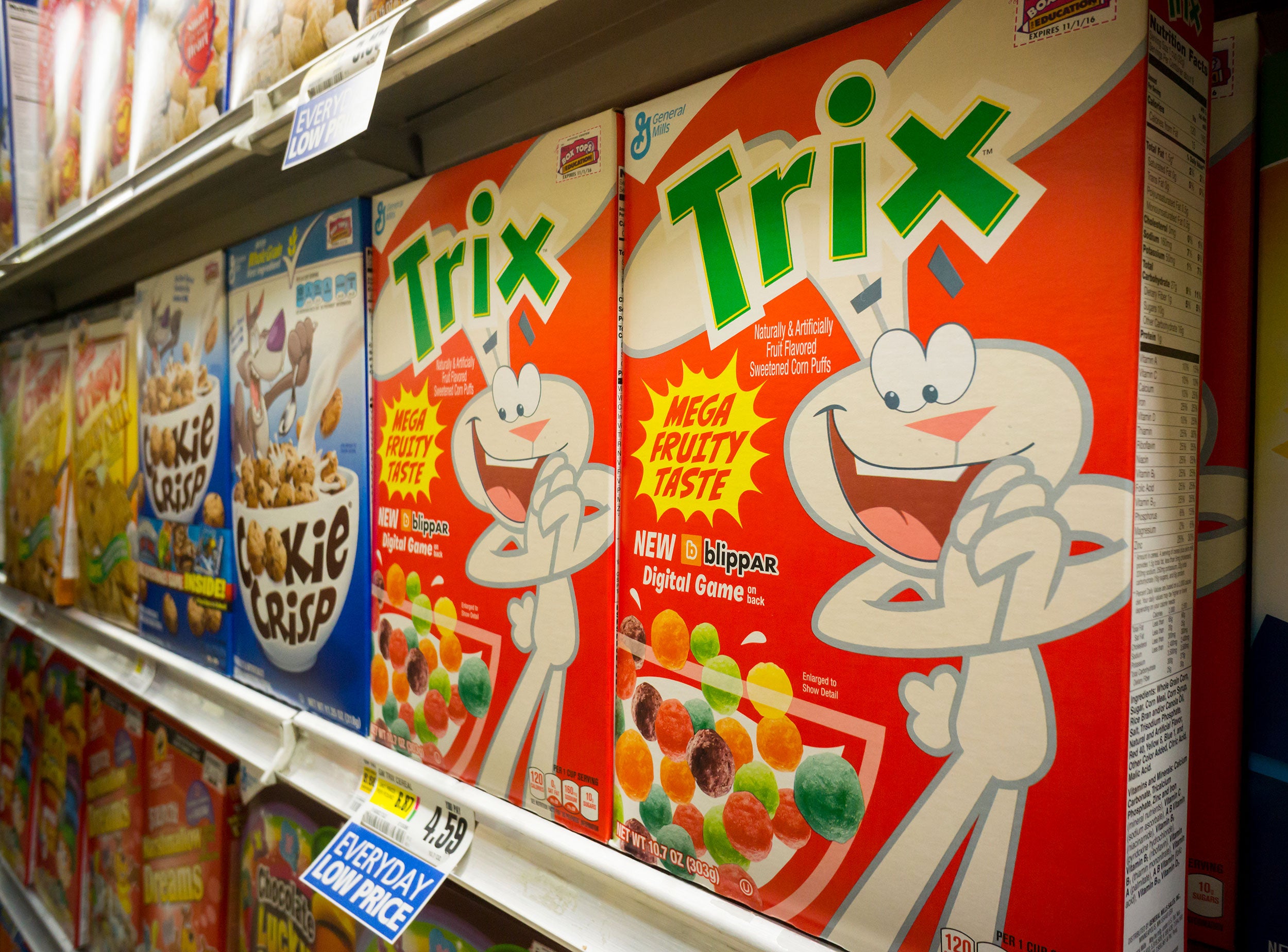

Yet hyperactivity in children isn’t the only health concern by groups against synthetic dyes.
“Synthetic food dyes are xenobiotics, meaning it’s foreign to the body. Anything foreign to the body, like bacteria or viruses, cigarette smoke, or a piece of plastic will cause inflammation, and inflammation is ultimately tied to cancer,” Hofseth stated.
“A low grade inflammation, mind you but if that occurs over 20, 30 years of consuming these [synthetic dyes] through the vehicle of ultraprocessed foods, then you can envision a higher risk of cancer,” he explained. “Around 70 percent of the middle aisles of a grocery store are ultraprocessed foods.”
Hofseth is focusing on researching the health effects of Red No. 40, Yellow No. 5, and Yellow No. 6 to see if they invoke the Delaney Clause, but scientific research is just one of the requirements that need to be met in order for colors to be banned.
“In 1987, Dr. [Joseph] Borzelleca published a study showing that Red No. 3 causes thyroid tumors in male rats. So why didn’t it get banned then?” Hofseth asked, somewhat rhetorically. “The science has to be there, the public awareness has to be there, and then finally the governmental support.”
The process for scientific funding is lengthy, especially since there aren’t many researching this.
“I think only two groups, including myself, are studying this in the United States,” he said. And before a study that can take two to three years to start, there is often a several-month-long period after the grant request is submitted for it to be approved.
Dr. Monica Giusti, professor in the Food Science Technology department at Ohio State University, studies the health benefits and potential application techniques for natural dyes. She studies the potential applications of anthocyanins, a class of compounds called polyphenols found in plants that carry natural pigment and antioxidants.
“There are more than 700 different anthocyanins that are naturally present in plants, and they provide beautiful bright orange, red purple, violet, blue, and even some black colors in nature,” Giusti stated.
“These compounds are very potent antioxidants and anti-inflammatory agents.” Giusti continued. “We evaluated anthocyanins in environments that resembled colon cancer, and the anthocyanins treatment could slow down the growth of cancer cells.”
She said that anthocyanins have also been investigated for healing cardiovascular disease, metabolic syndrome, cognitive function, and UV protection.
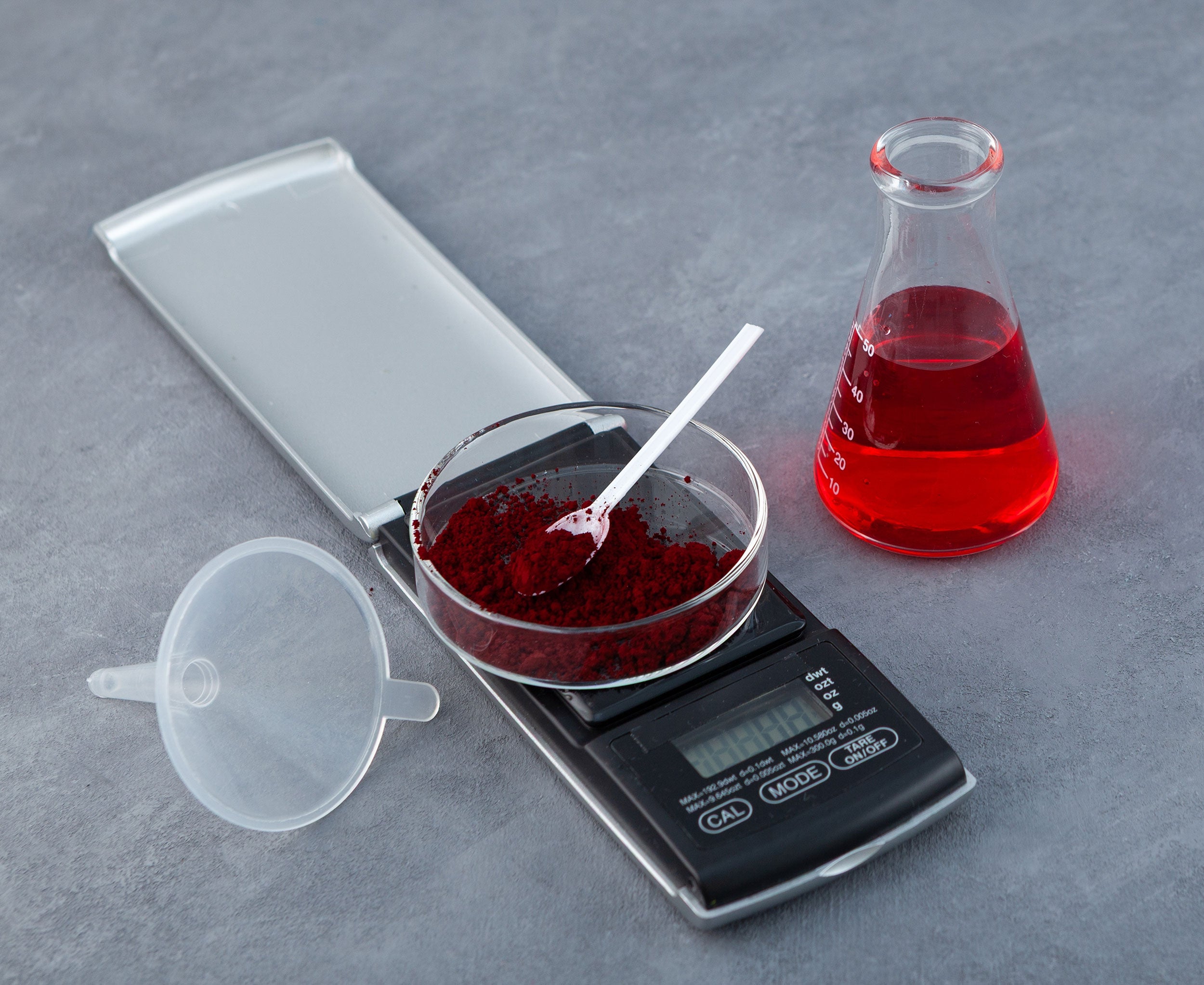

In 2021, the movement to ban synthetic colors was revived when a California study linked synthetic dyes to hyperactivity in children again. California became the first state to ban Red No. 3 by 2027, along with other food additives, as part of the California Food Safety Act.
Then in 2024, California passed a bill banning the remaining six synthetic dyes in schools by the end of 2027. Connecticut, West Virginia, and Utah followed suit with similar legislation prior to the announcement by Kennedy and a number of states after.
This situation forces companies to decide whether to produce a single line of products for the nation or create a patchwork approach, which can be expensive. Reformulation, also expensive and lengthy, means repackaging, sourcing natural colors from fruits and vegetables that producers plant and grow before they can be concentrated and transported for food scientists to test.
“As we speak, there are many growers that are already trying to find space in the color manufacturing world,” Giusti stated. Farmers who grow produce may opt to make a colorant of their produce that may not fit the mold of the traditional market.
If all companies were to switch to naturals by the end of the year, there is not enough supply of natural colorants to meet the demand — which means that the availability and stability of those colors could shorten.
“If companies make that switch, there will be consumers that are going to find more expensive products that are going to go bad faster,” Giusti stated.
Renee Leber, food science and technical services manager of International Food Technology (IFT), is working to find cost-efficient solutions for companies transitioning to natural colors and supply-chain solutions for natural-color suppliers to meet demand.
While companies will attempt to change their products without upsetting consumers, there are a lot of factors that might make it more difficult for some than others.
“Will they be able to mitigate [the change] completely? In some cases, yes, and in many cases, no. If it’s a change that hits their [consumers’] wallets or affects the shelf life of the products, there’s going to be an emotional reaction,” Leber said.
Consumers should prepare themselves while companies pivot.
“Realistically, natural colorants are more expensive than the synthetic colorants,” Leber said, and “the quantity needed is going to be higher than synthetic colorants.”
Attempting to reach the same shelf life of synthetic colors is tricky.
“There might be a measure of adding more natural color in the hopes that as the natural color and shelf life starts to hit and that color starts to mute, having an extra base might help for as much time as possible, maybe extend that shelf life a little bit,” Leber said. This is especially difficult for products with vibrant colors and longer shelf lives, she added.
“We’re looking at accelerated shelf life testing to figure out how these natural colorants are going to react,” Leber said, addressing the constrained timeline.
“A naturally derived product, even with any kind of help that can be given to them, they’re not going to last the same amount of time as a Red 40 would.” Leber said
As the artificial-dye deadline approaches, companies are making announcements on whether they will be able to make or miss it. Although the push comes from the government, consumers are watching what the industry will do.
“Nobody wants their company to be the company that gets called out for not changing in time,” Leber stated.
Following the framework on May 9, 2025, the FDA granted three new natural color additive petitions, including galdieria as a blue color, butterfly pea flower extract (expanding use to cereal, crackers, and chips) to become a range of blue purples and green, and calcium phosphate to use as a white. Gardenia blue, another blue color being approved, was announced on July 14, 2025.
“Natural colorants still cannot provide all the different shades that we could produce with those limited synthetic dyes,” Giusti stated. “We still need more because of the supply, compatibility with the matrix of the different shades we need in our food supply, and colors that are going to last longer. …
“If they [food companies] want to replace that synthetic red with a natural one, they will not likely find one that works for all 10. They may need 10 different solutions for the 10 different products. So instead of buying one, now they need to buy 10 different ones,” Giusti stated.
“Sometimes natural red and yellow don’t always make the bright orange you think they’re going to make, so there’s going to be a lot more trial and error in some cases,” Leber said.
Consumers, they eat with their eyes first,” Leber noted. “The question might come in: ‘If your red velvet cake is a little less red, is that OK to the average consumer?’ “
Developing new naturally derived colors is lengthy and very difficult. Using application methods that are already approved might be the fastest and easiest way.
“For example, we already have a process for anthocyanins from red cabbage, so I’m just going to ask for other growers, but this cabbage only provides one color for certain types of applications, so we need to diversify as well,” Giusti stated.
Although Giusti supports speeding the process of approving new natural colorants by using more resources and manpower, following safety guidelines is necessary.
“We don’t want to cut corners because being from nature does not mean it is safe,” Giusti said. She learned this while attempting to extract color from red potatoes. “When we concentrated the pigment, we also concentrated these compounds that were not safe. … That colorant had to be prepared in a different way to avoid a toxic compound.”
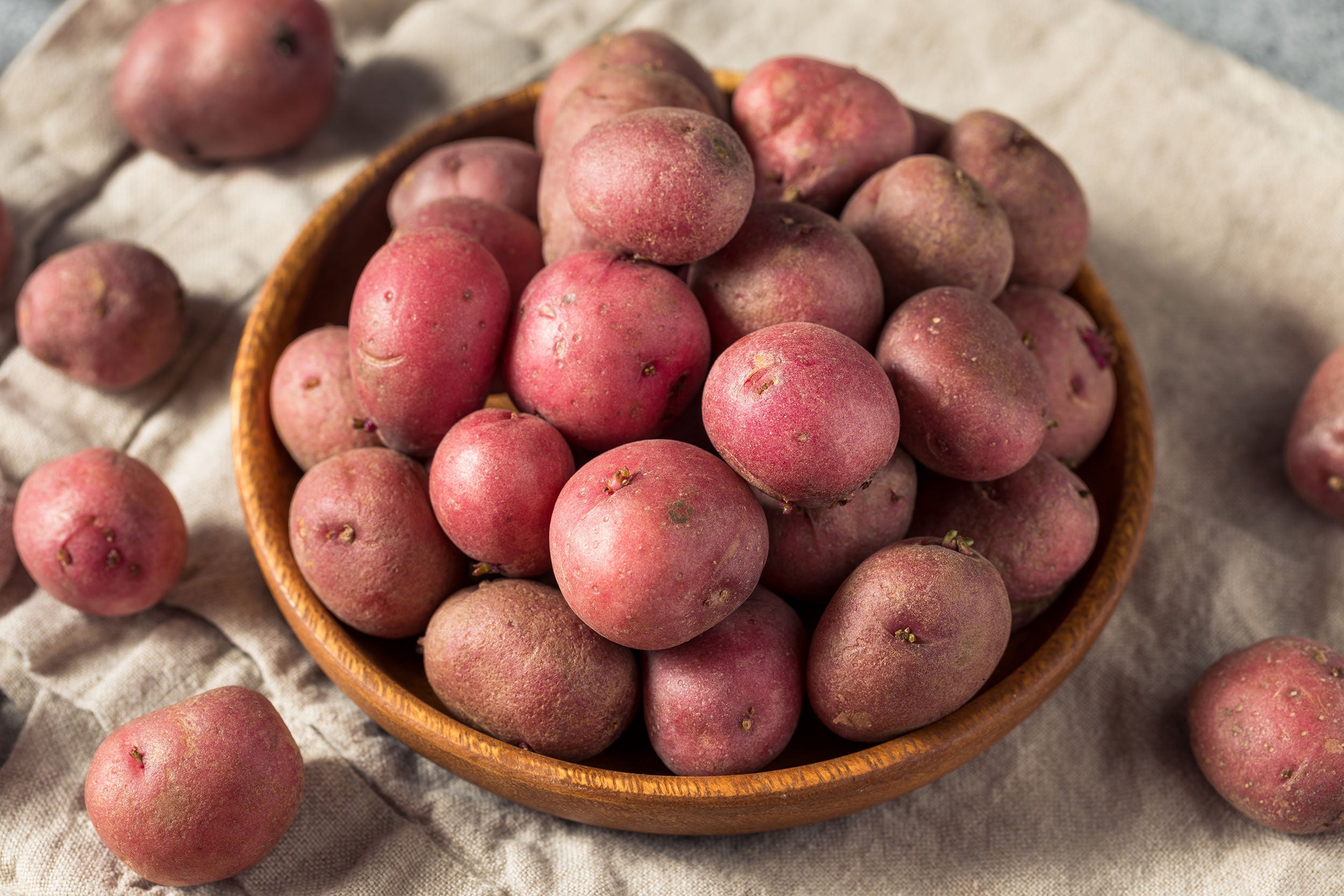

The steps and methods of application may also need to be rethought and reworked.
“You may need more refrigerated storage, and maybe different ways of storage may now mean you need to wait until the third or fourth step so that the color doesn’t disappear during the process,” Giusti said.
“The same compound may give you red color in one food, bluish color in another food, a very ugly, greenish brownish color in a different food, or become invisible in the same compound,” she said.
After natural colors are packaged, oxygen, acidic, temperature, and sunlight levels can alter the color.
Using natural flavors may also alter the taste of the product.
“Turmeric taste can be OK in your product, but you may need something that’s going to play well with strawberry,” Leber said. “I think companies are at a point where holding out for development is not necessarily going to be an option for too much longer.”
“Some companies are going to have to rake the consumer along with them on this journey, and they’re going to have to communicate. We might see the color get a little duller, we’re going to see a 10 percent increase in price, and we’re doing everything we can to mitigate it,” stated Leber.
California is now going after ultraprocessed foods in school lunches as Assembly Bill 1264 has been introduced and passed by the assembly on June 3, 2025. It still needs to pass the senate before it can be signed into law. It would require ultraprocessed foods to be defined and banned from school lunches.
Although the initial move to get rid of synthetic colors was made in partnership with industry stakeholders, there have been additional moves for a legal pathway by other decision makers in government.
Tahja Sims serves as the 2025 American Farmland Trust Agriculture Communications Intern at AGDAILY, with a focus on helping to amplify diversity and minority voices in agriculture. Tahja is currently an agricultural economics major and senior at Texas A&M University. She has served as an intern with the U.S. House of Representatives and is a member of Minorities in Agriculture, Natural Resources and Related Sciences (MANRRS) organization.



:max_bytes(150000):strip_icc()/IMG_7936-c12c642ad0064146a4aecfc1a60502a3.jpeg)
:max_bytes(150000):strip_icc()/HTTJohnDeeretractorwithtillage_preview-6e8cfa3643f043efb29085bd78d76c98.jpg)
:max_bytes(150000):strip_icc()/Canadian20flag48553671412_aeb0538794_c-0bfa123de2b54e30ab4fadecae382d4a.jpg)


